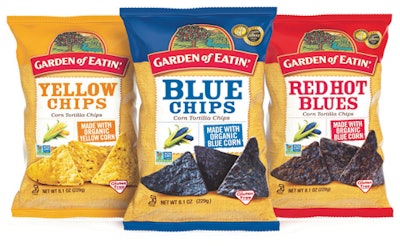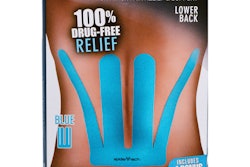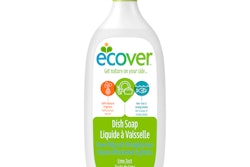Trends, unlike fickle fads that come and go, signal significant cultural shifts in consumer behavior and clarify what’s important to consumers when they make the decision to purchase one product over another. As brand owners and designers, we need to listen up, take heed, and shift accordingly by offering solutions and better choices to meet consumer demands.
One can’t ignore what can only be described as the better-for-you tsunami that has washed across American consciousness. Consumers today expect something better when it comes to product ingredients, product delivery, and overall brand experience. They are demanding an absence of negatives such as ingredients they can’t pronounce, fillers and chemicals, and savvy marketing speak that muddles the message and lulls them into blissful ignorance. Consumers want to believe in something credible and meaningful, and thus they often subscribe to mission-based brand platforms that demand something better, just as they do.
This has resulted in the “clean movement,” a mission-based rallying cry that has compelled many a marketer to adapt a cleaner, more transparent way of doing business.
For brand owners and package designers, packaging is a primary driver for brand recognition. With the emergence of the clean movement, many of them have scurried to address clean on their packaging as a first step. But is this enough to woo consumers long term? Does a clean courtship grounded in packaging alone translate to a successful long-term consumer relationship based in trust and consumer loyalty? We’re not so sure.
To those consumers who truly scrutinize clean labels—namely those who, due to health and wellness lifestyle trends, have become label critics—the primary implication of a clean label is transparency (wholesome ingredients, a lack of artificial ingredients, and a lack of common allergens). Yet that is only one part of the broader context of what it truly means for a brand to embody clean. Rather than a product story, adapting to a clean ethos is really a brand story, a brand point of view, and a brand point of difference. Yet very few brands successfully thread all that being clean entails throughout all facets of their marketing endeavors. So what does clean marketing really mean?
Leading by example, successful clean brands employ basic fundamentals that serve as the epicenter for everything they do, without exception. These brands:
• Are free from gimmicks and sugarcoating
• Employ an often disruptive, mission-oriented focus
• Execute the core essence of the brand through all consumer touch points
• Favor a top-down transparent culture, starting with their CEO
• Initiate socially minded/philanthropic efforts
• Integrate sustainable sourcing/environmentally sound packaging whenever and wherever possible
Which brands do it best? Following are a few that get top marks.
Snack category: Garden of Eatin’
No stranger to success, Garden of Eatin’ came out of the gate more than 35 years ago with delicious premium organic tortilla chips—a unique point of difference then. But with time and the influx of parity offerings, their leadership status seemed to be on the verge of slipping, and they needed to ask themselves some serious questions. Namely, “Are we telegraphing clean assertively and uniquely through our trade dress?” “Can we convey clean, premium, organic—the key things today’s consumers strongly associate with ‘high quality’—more effectively?”
In 2011, Garden of Eatin’ did an about-face with a package redesign of 35+ SKUs that reasserted their category position as the leading brand of authentic premium natural organic tortilla chips that appeal to aware consumers who gravitate toward “best brands” in the aisle.
The redesign was a key driver of the brand’s success, and double-digit growth soon followed. The packaging redesign dialed up the clean story through a focused use of non-GMO claims and an enhanced ingredient story through artful photography juxtaposed with natural cues such as an eye-catching simulated burlap matte bag, communicating their clean point of difference. But their strategy didn’t stop with their packaging alone. The Garden of Eatin’ story was effectively woven into all marketing endeavors, including all of their mass media advertising, with a huge focus on spotlighting their commitment to better choices on their website.
By driving home what’s most important to them as a company—using only organic corn, harvesting conducted solely by sustainable farming partners, and following a regimented process of using only expeller-pressed oil, cooked with pure, filtered water—the company reestablished their commitment to their community of consumers and what’s important to them. Garden of Eatin’ continues to stay innovative through their published clean best practices, which include reducing and “greening” their packaging.
Beverage category: Honest Tea
Nothing short of a dazzling success story since its inception, Honest Tea has taken America by storm with their authentic, iconic-looking beverage packaging and their commitment to better choices for a broad community of consumers. From their inherent “Honest” nomenclature to all facets of their brand communication, Honest Tea spreads an authentic gospel, and co-founders/deities Seth Goldman and Barry Nalebuff demand that their stakeholders, board members, and company as a whole subscribe to their religion of transparency and a better way of doing business.
With early-onset child obesity and type 2 diabetes trending at an alarming rate, Honest Tea claimed a stake in the competitive map early on by launching with the USDA Organic certification, making it a point to celebrate their “Just a tad sweet” point of difference. The company introduced its high-in-antioxidants, low-calorie, caffeine-free tea offerings in glass, PET, and pouch packaging. By following a very simple code of ethics, Honest Tea struck a chord with consumers and gained an immediate following.
In terms of its packaging, Honest Tea has made a firm commitment to increasing national recycling rates and will be implementing this on their packaging in a more pervasive way. Through a recent partnership with How2Recycle.com, they will include recycling instructions on all of their packaging. Their Honest Kids cartons and 59-oz bottles will be the first to include an easy-to-read graphic in the hopes of reducing the guesswork and uncertainty around what can and can’t be recycled.
Honest Tea is also continuing to work on lightweighting their PET packaging and has a stated goal of implementing a 100% plant-based recyclable bottle in the future. Currently, both their bottles and pouches are free of phthalates and BPA—two chemicals suspected of causing health risks associated with humans.
Focusing on what’s inside the bottle, Honest Tea took clean practices a step further in 2013, purchasing 6.5 million pounds of organic ingredients grown without synthetic chemicals and pesticides, genetically modified organisms, or irradiation.
Honest Tea pioneered the clean landscape in the beverage space and continues to innovate, give back, and remain true to the core idea of their brand story—one grounded in honesty, to both themselves and to their consumers.
Personal care category: The Honest Company
While it doesn’t hurt to have co-founder and celebrity spokesperson Jessica Alba and family front and center in The Honest Company’s advertising and marketing endeavors, we’d argue that she isn’t the company’s primary selling point. The Honest Company focuses on providing organic, safe, eco-friendly, beautiful, convenient, and affordable products to families looking for better solutions that are safe for their kids and the planet. Products include baby care, personal care, household cleaning, health and wellness, and other offerings.
Built on a foundation committed to integrity, honesty, sustainability, and fun, all products are free from harmful or toxic ingredients. Their mission is to redefine the “family brand” and create something for all families, everywhere. The packaging is a smart balance of cheeky and ethereal, playful and educated. It evokes a natural and pure aesthetic and feels upscale and aspirational.
Beyond the overall clean feeling, The Honest Company takes their packaging one step further with sustainable and eco-friendly formats. One in particular caught our attention: The company is using an aluminum bottle rather than a plastic one for their Honest Bug Spray. According to the American Chemical Society, “Aluminum is light, strong, corrosion-resistant, non-magnetic, non-toxic, and naturally good looking.” In addition, in the U.S., aluminum is recycled 50% more than glass and plastic.
Because embodying a sustainable ethos is of utmost importance to The Honest Company, they plan to roll out aluminum packaging across other product offerings in their line as well. The one drawback they confess is that aluminum may dent slightly during shipping. But that is something they are willing to sacrifice for the betterment of the planet.
Aluminum is catching on, and while those companies making the conscious decision to go with aluminum packaging may pay more upfront, the investment will pay long-term “clean” dividends with regard to the environment.
One to watch: Anti-Grain
While certainly the new kid on the block, Anti-Grain Foods—the “Vibrant Alternative for Grain Haters”—is causing a disruption. Founders Jerry and Amanda Roback say they developed the Anti-Grain brand after trying the gamut of grain- and gluten-free products on the market and feeling they had to compromise on taste and nutrition to meet their nutritional goals. The brand comprises three fruit- and vegetable-based “grain-free” flours made solely out of domestically grown produce that have been drum-dried at low temperatures to retain as many nutrients as possible.
Anti-Grain is nothing short of a movement, offering an attractive alternative to those who are paleo, grain-free, wheat-free, gluten-free, allergen-free, whole-grain, or just trying to cut back on grains. Gaining a lot of momentum thus far on Kickstarter, a forum for new/emerging brands to gain consumer loyalty and financial backers, the company’s mission is spreading quickly. Why? Anti-Grain isn’t just about taking the grain out of food; they won’t make anything unless they can replace it with something healthy, substantial, and beneficial to your body. That’s their promise.
Demonstrating absolute transparency, the Anti-Grain team is very upfront about their future company goals:
• Source only 100% Organic produce
• Complete the official Non-GMO Project verification and implement the stamp on their packaging
• Complete the official Gluten-Free certification and implement the stamp on their packaging
• Improve the environmental impact of their packaging
Their current 8-oz resealable, “refreshingly sparse” stand-up pouch utilizes plastic-based materials that Anti-Grain says are recyclable. The film construction was chosen to ensure that the flour remains as fresh as possible. Plans are underway to develop spot labels on the front and back that will require fewer materials and upfront costs.
As of Oct. 1, 2014, Anti-Grain hit its funding goal on Kickstarter, raising enough money (an impressive $18,000) to be able to have their products verified by the Non-GMO Project. Will better ingredients translate to cleaner sustainable packaging?
The future of clean
If trends tell us anything, it’s that as consumer needs change and grow more complex, marketers will need to navigate these dynamic waters with offerings that fulfill consumer wish lists and need states even more so than they do today. It will be interesting to see what the next wave of 100% clean criteria entails and how marketers will step up to the plate and make the effort to weave it into their own brand stories.
Lisa Landers is the Director of Client Services & Strategic Development for Smith Design (http://smithdesign.com). She can be reached at l[email protected].

























